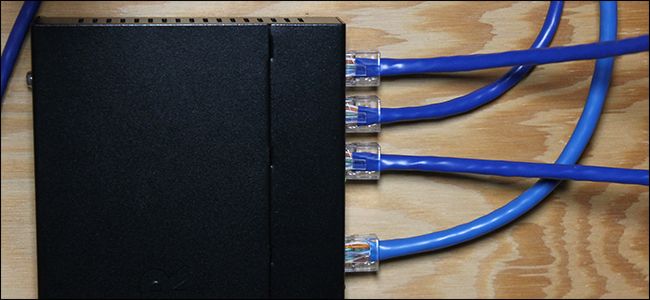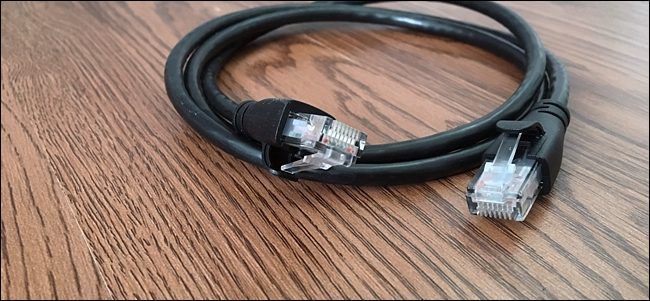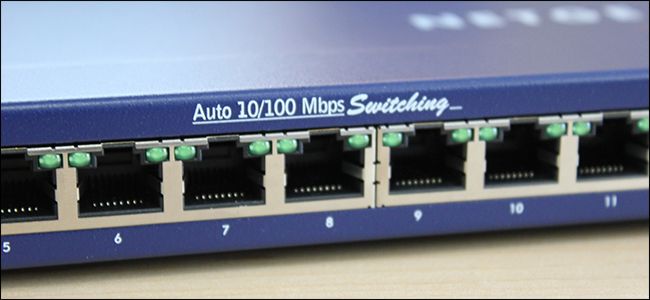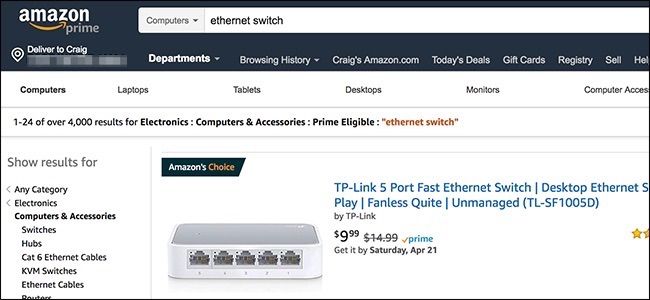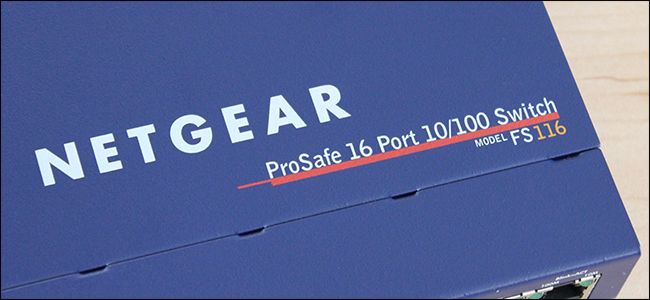Quick Links
Not all Ethernet is created equal. These days there are two available standards, Fast Ethernet and Gigabit, which are completely distinct speed interfaces. It's important to understand the difference between them and which one you should choose.
So there I was shopping for a new Ethernet switch, assuming that all of them were using the latest and greatest technology. Boy was I wrong---I ended up with a "Fast Ethernet" switch when what I really needed was a "Gigabit Ethernet" switch. Turns out, there's a huge difference.
A Quick Ethernet History Lesson
Ethernet was first introduced to the public in 1980, and it had a max throughput of 10 megabits per second. 15 years later in 1995, an updated version of Ethernet was released. It was called "Fast Ethernet"---sometimes referred to as "10/100"---and it had a throughput of 100 megabits per second.
However, just three years after that, an even newer version was introduced. It was named "Gigabit Ethernet"---or "10/100/1000"--- and it is currently the latest standard. Gigabit Ethernet has a maximum throughput of 1,000 megabits (or 1 gigabit) per second, hence the name.
Faster interfaces do exist. A 10 gigabits per second is currently in use, but it has yet to reach widespread use in consumer products. There's even a 1,000 gigabits per second (Terabit Ethernet) interface currently in development.
Fast Ethernet? More Like "Fast" Ethernet
Most modems and routers these days come with Gigabit Ethernet interfaces. So right off the bat, your home network is already equipped with the latest and greatest that networking speeds have to offer. The moment you throw a Fast Ethernet device into the mix, your maximum network speed instantly drops by 90%. A previous article of ours sums it up well:
"In order to take full advantage of the maximum speeds, all the devices in the transfer chain need to be at or above the speed rating you want. For example, let’s say you have a media server in your basement with a Gigabit Ethernet card installed and a media console in your living room with a Gigabit Ethernet card but you are connecting the two together with a 10/100 switch. Both devices will be limited by the 100 Mbit/s ceiling on the switch. In this situation, upgrading the switch would boost your network performance considerably."
I got myself into this exact situation when shopping around for Ethernet switches. I went onto Amazon, searched for "ethernet switch," and picked one near the top that had good reviews and was pretty cheap. Simply assuming it was what I wanted, I hit the purchase button. But what I really bought was a slower Fast Ethernet switch instead of the Gigabit Ethernet switch I really needed.
Fast Ethernet Is Still Alive and Well for Some Reason
When you perform a search for "ethernet switch" on Amazon, the top result (at least for me) is a Fast Ethernet switch (this one, to be exact). About half of all the results on the first page were for Fast Ethernet devices that only support the measly 10/100 protocol.
I have no idea why this is the case, other than giving consumers a cheaper option if cost is more important than speed, but even then we're only talking about a few dollars difference.
What's more important is that if you don't know exactly what to look for in an Ethernet device, it can be really easy to accidentally select Fast Ethernet when what you really want is Gigabit Ethernet.
This is especially true if the 10/100 or 10/100/1000 protocols aren't mentioned in the listing titles---someone might just see the words "Fast Ethernet" and assume it's the latest and greatest without knowing what that term truly means.
How Does It Affect My Internet Connection?
So what if you do end up with a Fast Ethernet device rather than a Gigabit Ethernet device? Will your connection suffer because of it? Well, it depends.
Unless you've switched over to fiber, your internet connection is very likely less than 100 megabits per second. Since a Fast Ethernet device is capable of 100 megabits per second, it's going to handle more than your internet connection can provide.
It's a bigger problem on your local network, though. If you've got a mix of Gigabit and Fast Ethernet devices on your network, you're going to be limited to that Fast Ethernet speed (100 megabits) when your network is capable of much more (10 times that at 1000 megabits). If you use your network for transferring large files, backing up, and other bandwidth-intensive activities, you will notice a difference at the lower speeds.
In short, our advice is this. Buy Gigabit Ethernet devices instead of Fast Ethernet devices, even if they cost a little bit more. And make sure your Ethernet cables are at least Cat 5e or Cat 6, so they work with higher speeds, too. Your local network will run faster, and if you end up with better internet speed in the future, your network will be ready to handle it.

